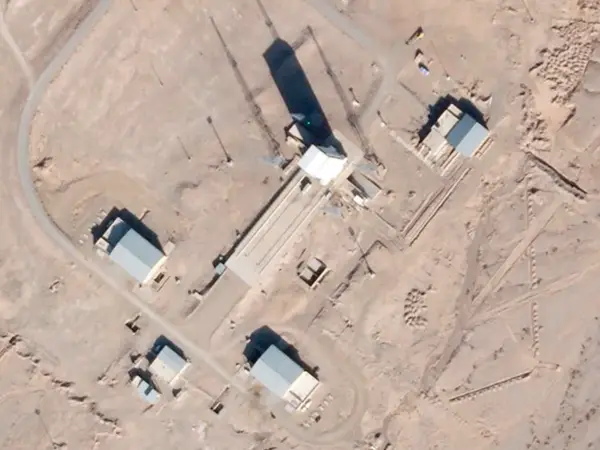Iran appears to be preparing for a space launch as talks continue in Vienna over its tattered nuclear deal, according to an expert and satellite images.
The likely blast off at Iran's Imam Khomeini Spaceport comes as Iranian state media has offered a list of upcoming planned satellite launches in the works for the Islamic Republic's civilian space program, which has been beset by a series of failed launches.
Iran’s President Ebrahim Raisi visited a space technology exhibition in Tehran on November 26 and asked officials to work on reaching the 36,000 km orbit around the earth in four years.
Currently Iran is attempting to place satellites in the 500-kilometer orbits.
Minister of Communications and Information technology, Issa Zarepour, who supervises Iran’s space program had told local media that the project to reach the high orbit was planned to be accomplished in 10 years, but Raisi asked to speed up the program. The president pledged all the assistance needed to help Iran’s Space Agency.
Iran's Revolutionary Guard runs its own parallel program that successfully put a satellite into orbit last year.
Satellite images taken Saturday by Planet Labs Inc. show activity at the spaceport in the desert plains of Iran's rural Semnan province, some 240 kilometers (150 miles) southeast of Tehran.
A support vehicle stood parked alongside a massive white gantry that typically houses a rocket on the launch pad. That support vehicle has appeared in other satellite photos at the site just ahead of a launch. Also visible is a hydraulic crane with a railed platform, also seen before previous launches and likely used to service the rocket.
Conducting a launch amid the Vienna talks fits the hardline posture struck by Tehran's negotiators, who already described six previous rounds of diplomacy as a "draft," exasperating Western nations. British and German foreign minister have gone as far as to warn that "time is running out for us at this point."
The United States and other countries are concerned that Iran’s satellite program is a cover for developing ballistic missiles that can exceed the current 2,000 km range of Iranian vehicles. Regional and Western countries say that beyond Iran’s nuclear program, its ballistic missiles should also be curbed. Highlighting a space program, Tehran can argue that it needs the technology for peaceful, space related efforts.
But all this fits into a renewed focus on space by Iran's hardline President Ebrahim Raisi, said Jeffrey Lewis, an expert at the James Martin Center for Nonproliferation Studies at the Middlebury Institute of International Studies who studies Tehran's program.
With Iran's former President Hassan Rouhani who shepherded the nuclear deal out of office, concerns about alienating the West with the launches likely have faded.
"They're not walking on eggshells," Lewis told AP. "I think Raisi's people have a new balance in mind."
With reporting by AP
